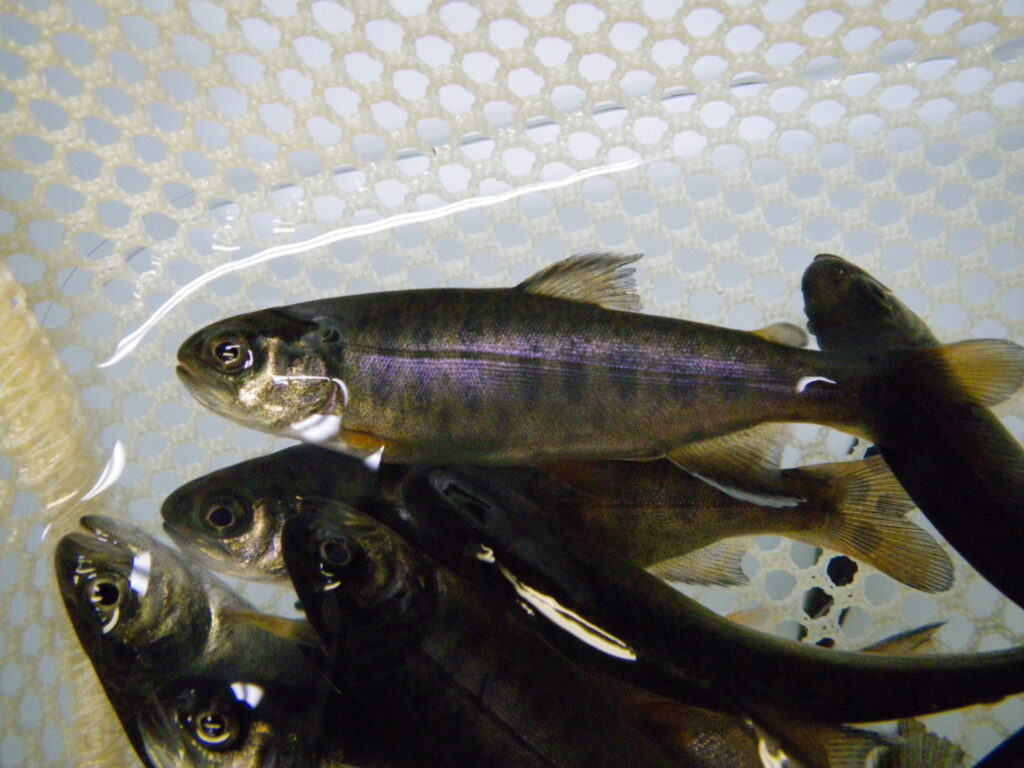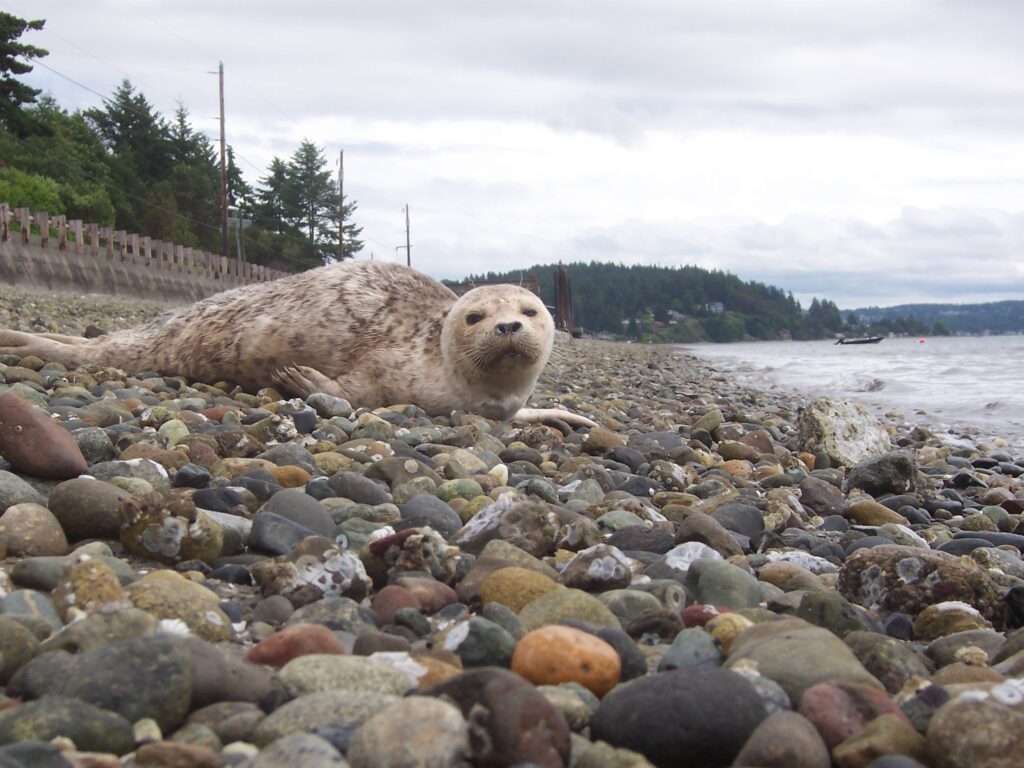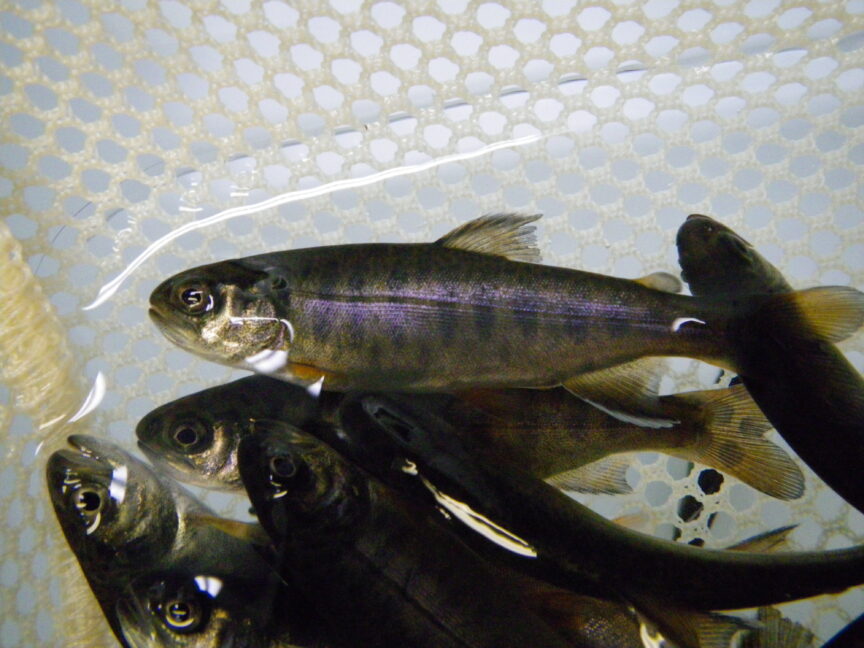
Release of hatchery Coho Salmon associated with reduced survival of Puget Sound steehead
The many rivers that feed Washington’s Puget Sound once produced over half a million steelhead (Gayeski 2011). But over the past thirty years, Puget Sound runs of sea-going O. mykiss have declined dramatically.
Since the listing of Puget Sound steelhead as threatened in 2007, low marine survival of smolts through Puget Sound has been identified as one of the key drivers in the decline of wild steelhead in the region.
Work by Megan Moore with National Marine Fisheries Service (NMFS) and others has shown that even though steelhead smolts move through Puget Sound in under two weeks, only 10% to 20% of smolts from south Puget Sound generally survive to reach the Strait of Juan de Fuca (Moore 2015).
This exceptionally high mortality rate over such a short time window has been linked primarily to heavy predation by harbor seals.
While harbor seals are opportunistic predators, the majority of their spring diet is generally composed of fish such as Pacific hake, Pacific herring and Northern anchovies (Moore 2021). If that is true, why are harbor seals wreaking such havoc on out-migrating Puget Sound steelhead smolts?
Recently, Michael Malick from NMFS published a paper which dug into the factors leading harbor seals to prey on juvenile steelhead. The study looked at the abundance of both coho and Chinook salmon during the steelhead outmigration window to understand how pulses of hatchery salmon impact the weekly survival of steelhead moving through Puget Sound (Malick 2022).
What they found is interesting.
Despite the fact that hatchery Chinook release levels were five times higher than those for coho, the study found a strong link between coho releases and steelhead survival in Puget Sound, but no significant relationship between releases of Chinook salmon and steelhead survival.

There are several possible reasons for this. Coho, which are reared for a full year in the hatchery, are larger and more energy dense than Chinook which are typically only reared for a few months prior to release. Additionally, coho are released over a broader time span than Chinook and typically utilize the same offshore habitat as steelhead.
The study also showed that the relationship between coho and weekly steelhead survival still occurred during years of high Northern anchovy abundance, although the overall survival of out-migrating steelhead was higher in years of high Northern anchovy abundance.
This suggests that hatchery releases of coho attract predators to feed on cohabiting steelhead smolts. However, when Northern anchovies are abundant the predators shift back to feeding on them after the pulses of hatchery fish have passed through Puget Sound.
This paper highlights the importance of a more holistic ecosystem-based approach to fisheries and hatchery management, an approach that considers how actions on one species impact another.
While there is no doubt that harbor seals have increased substantially in recent years, the problem of wild steelhead smolt losses is not as simple as just reducing predator populations. Predator reduction needs to be coupled with actions that cut across all threat categories.
For example, habitat improvements in Puget Sound to improve spawning habitat for forage fish such as Pacific herring need to occur alongside hatchery reforms such as reducing or altering timing of hatchery releases that are negatively impacting wild steelhead in order to result in meaningful change.
The Malick et al. study reminds us yet again that the more we learn about the complex factors that drive variations in fish and wildlife populations, the more we understand that siloed management actions almost never achieve desired outcomes. Managing wild steelhead in Puget Sound requires an adaptive, nimble approach with consistent investments in multiple tools working in synch. We are beginning to see action to improve the marine survival of steelhead in Puget Sound, as just this last year the legislature approved funding begin to address the steelhead survival bottleneck at the Hood Canal Bridge. However, efforts to improve marine survival through Puget Sound are only beginning to scratch the surface, including a $3.5m request in this year’s Governor’s budget for a one-time grant to install and assess a near-term solution to reduce juvenile steelhead mortality at the Hood Canal Bridge. There is still a long way to go with marine survival in Puget Sound, but among the actions to be taken, altering hatchery coho releases would certainly help.
To help Wild Steelheaders United improve Puget Sound steelhead numbers, go here.


